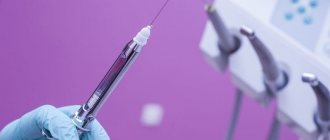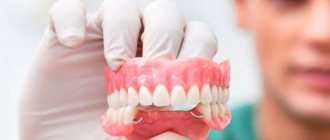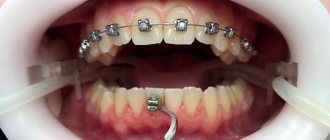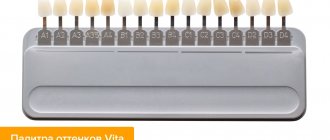Modern dentistry is constantly developing and improving methods of dental treatment, trying to achieve maximum restoration of the aesthetic appearance and functionality of the dentofacial apparatus. Until recently, in Russia, any tooth that could not be filled was simply removed, after which an implantation operation was performed according to one of the selected types. However, in some cases, such a radical solution to the problem is not always justified and it is possible to solve the problem without removing the tooth. In many dental clinics, dentists realized that for some categories of patients, due to psychological barriers, even implantation cannot be a full replacement for a natural tooth and have developed a number of special surgical interventions to save teeth.
Tooth-preserving operations are dental treatment methods performed with the aim of preserving natural teeth that were previously simply removed. It is important to save the tooth, but to stop the worsening of the inflammatory process, the development of infection and the atrophic phenomena of the jaw, which will inevitably progress if it is removed, you will have to work hard. Also in dentistry, there are clinical cases in which amputation of the root of a problematic tooth does not eliminate the disease and inflammation further develops independently, and tooth-preserving surgery is a more effective therapeutic technique.
In what cases is it possible to save a tooth?
To carry out such procedures, it is important to clearly determine the degree of success of tooth-preserving therapy.
!Important: This is not a panacea and, unfortunately, this is not possible under all conditions and not for all patients; tooth-preserving surgery is not always the ideal solution to the situation; sometimes you still have to remove a tooth and replace it with an implant, removable or fixed prosthesis. The main indication for such operations is the ineffectiveness of conservative treatment, which almost always begins therapy and the first stage of such treatment.
Indications for tooth-saving surgery:
- Perforation of the tooth root (most often a consequence of an incorrect method of filling the root canal or filling the tooth);
- Rapid progression of inflammatory dental diseases with the threat of surrounding bone resorption, with the risk of infection of neighboring teeth;
- Destruction of preapical tissues due to ineffective treatment of teeth that are located under the crowns, a cyst at the root of the tooth;
- The presence of crowns or a bridge, the removal of a tooth under which threatens to weaken the structure and total removal, is not advisable as a temporary delay in more radical treatment;
- The presence of a deep pocket at the border of the tooth neck and gums or between the teeth;
- Lack of adequate filling of root canals and low patency of the root canal due to which has led to the fact that a cyst or granuloma has now appeared on the root;
- A supernumerary or dystopic tooth in the position of fusion of the roots, with a risk for neighboring teeth, as well as tooth root caries;
- Excessive atrophy of bone tissue in a large area of the root, with the prospect of atrophy transferring to the main jaw bone;
- Pathological foci in the area of bifurcation (connection) of the roots of multi-rooted teeth.
The doctor makes a decision to perform tooth-preserving surgery on an individual basis, taking into account the characteristics of a particular patient, comparing the benefits and risks. If a dentist has the opportunity to save a tooth, he will definitely take advantage of it.
When is a bite corrected surgically?
Correcting the bite surgically allows you to eliminate any defects in the structure of the maxillofacial apparatus. The doctor can correct:
- malocclusion;
- discrepancy between the sizes of the upper and lower jaws;
- incorrect position of the jaws relative to each other;
- abnormalities of the jaw joints.
Malocclusion is not just an aesthetic facial defect. An anomaly in the structure of the jaw is a serious deviation that can lead to serious consequences:
- Diseases of the gastrointestinal tract. This is due to the fact that the patient cannot eat properly and chew food.
- Apnea. Due to improper closure and position of the jaws relative to each other, sudden cessation of breathing may occur.
- Dental problems. The abnormal position of the teeth causes uneven distribution of the load in the dentition, as a result of which the enamel is subjected to intense abrasion, the teeth crumble and fall out.
- Violation of diction and articulation. An incorrect bite prevents the patient from communicating normally and leading a full life.
- Headache, toothache and joint pain.
Correcting the bite surgically allows you to eliminate all of these problems, restore self-confidence and improve your general condition.
Contraindications to tooth preservation
During the initial examination and examination of the patient, much attention is paid to eliminating contraindications to tooth-preserving operations. This type of surgery is not performed if the patient has:
- That the operation takes place in cases of severe somatic pathologies in the decompensation stage (cardiovascular problems, diabetes, bronchial asthma, and so on);
- Mental disorders in the acute stage;
- Any problems with blood clotting (congenital and acquired coagulopathies without correction with drugs);
- Decompensated dysfunction of the immune system (any uncompensated immunodeficiency, including HIV infection);
- Old age of patients (poor tolerance of surgical interventions, increased all possible risks, weakened body);
- Poor quality of oral hygiene (the problem can be solved by professional cleaning);
- The presence of oncological tumors of any location and stage.
- During the examination, the dentist’s task is to exclude the listed contraindications, the omission of which can lead to disastrous consequences.
!Important: Special attention should be paid to the tolerability of both local and general anesthesia (depending on the choice made), this includes the allergic component and the selection of the drug for older patients with hypertension, preventing the occurrence of a crisis.
The dentist should be aware of the frequent allergic reactions that occur in patients to local anesthetics of the novocaine series. Despite the fact that modern drugs are quite safe, you need to make sure every time that the body does not hyperreact.
Plastic surgery of tongue and lip frenulum
In addition to vestibuloplasty, plastic surgery of the frenulum of the tongue and lips is often performed in dentistry.
The pathological condition of the frenulum can lead to many problems and inconveniences, such as:
- problems with diction,
- interference with normal food intake,
- gap between the front incisors,
- gum recession,
- periodontitis,
- malocclusion.
- In infants there is a dysfunction of sucking.
During plastic surgery of the frenulum of the tongue, the latter is dissected, then the lateral edges of the mucous membrane are compared using transverse sutures to capture deep-lying tissues. Labial frenuloplasty is performed by making an incision around the frenulum, then the fibers are separated and displaced from the bone, after which sutures are placed
Types of tooth-preserving operations
There are many types of tooth-preserving operations, each of which has its own advantages and disadvantages, and is also performed for certain dental diseases. Modern dentistry distinguishes the following methods of tooth preservation:
Excision and correction of the apical portion of the root
The operation is carried out in cases where there is any pathological focus in one of the areas in contact with the root. In order to eliminate the problem, a small incision is made through which the cyst and inflammation are removed and the damaged root is partially removed. The cavity formed as a result of surgery is filled with natural, synthetic or osteoplastic material. This promotes rapid tissue healing and preservation of the full functioning of the natural tooth. The most common reasons for resection of the root apex are the presence of cysts and granulomas, accompanied by inflammation and not amenable to conservative treatment methods.
Complete root amputation
Human teeth do not always have only one root, which makes tooth-preserving surgery such as complete amputation of a dead root possible. It is carried out on those teeth where there are two or three roots, while tissues not involved in the pathological process remain in place. The dentist’s task is to rid the patient not of the tooth, but only of the diseased area of the multi-rooted tooth.
No changes in the functioning of the tooth occur, since the mechanical function of the tooth does not change, the remaining roots completely compensate for the loss of one area and distribute the load among themselves.
Hemisection of tooth root
This surgical intervention involves the removal of one of the affected tooth roots with partial amputation of the crown, usually performed on molars or premolars. During the surgical procedure, the area involved in the pathological process is carefully cut out and removed, after which the resulting space is filled with osteoplastic material. Hemisection of the tooth root is a sparing corono-radicular separation and gives very good results.
Increasing the length of the coronal area of the tooth
This type of surgical intervention is required in cases where the remaining tooth tissue is too weakened, it is necessary to improve the appearance of the tooth, and also when the natural tooth is too short or is quickly worn away. As a rule, such a problem affects several areas of the dentition at once and is caused by an incorrect bite or excessive load on the tissue. There is also a congenital predisposition to increased tooth wear, which also requires lengthening of the crown part. The procedure is non-traumatic, very fast and cosmetically always very successful.
Manipulations in pathological processes in the periodontium
Periodontal soft tissue diseases pose a great danger of losing the patient's entire dentition. In addition, their progression is accompanied by the addition of secondary infections, which aggravates the risk of loss of natural teeth. Treatment of such diseases must be timely and as radical as possible with the removal of all compromised tissue.
The use of tooth-preserving surgery for periodontal diseases is performed not only on damaged teeth, but also to strengthen healthy teeth. This method of treatment is almost the only solution for periodontal damage, which involves preserving teeth. They try to treat diseases conservatively, but very often the desired effect is not achieved. During the surgical procedure, infected soft tissues and formations in them are removed. Microsurgical access is carried out through the mucous membrane of the gums.
There are two main types of operations for periodontal pathologies:
- Flap tooth-saving operations. This surgical intervention is the main solution to the problem of periodontal pathologies. There are several of its varieties: reconstruction and correction of bone pockets, gingivoplasty, the use of the method of directed regeneration for periodontal tissues, the use of an allogeneic graft to strengthen teeth. Thanks to the operation, the infectious process is transferred to the stage of remission, and subsequently, the teeth become less mobile, signs of bacterial damage to the oral cavity disappear (unpleasant odor, discharge of pus, and so on).
- Curettage. This operation involves the delicate removal of affected areas from periodontal pockets without incisions. If the gums around the crown are pulled back, the curettage is called open curettage. It allows you to better eliminate infected areas and achieve a positive treatment result. Bone material is often introduced into the surgical area, but sometimes this is impossible due to severe infection, then the resulting cavities are gradually filled with dense scar connective tissue, which is not sensitive to external irritants, and itself strengthens the tooth. If the empty spaces are too large, they are filled with osteoplastic material in a second stage after several months in clean conditions. Closed curettage allows you to deal with small foci of the infectious process (up to 5 mm) in a less traumatic way.
Features of the bite correction operation
The operation to correct the bite is performed under local anesthesia under the guidance of an oral surgeon. All incisions and stitches are made inside the oral cavity, so there are no scars or traces of manipulation left on the face.
If the jaw abnormality is congenital, orthodontic treatment is prescribed even in childhood. To correct the bite and change the position of the teeth in the dentition, traditional braces or self-ligating systems are used (another name is non-ligating). The duration of treatment with braces largely depends on the complexity of the case, but on average it takes from 1 to 3 years. Although this method is quite time-consuming, it has the following advantages:
- painless;
- a short recovery period (getting used to discomfort in the oral cavity due to the presence of a foreign body and restoring diction) occurs in a maximum of 1 month, which is much faster than after correcting the bite surgically;
- even applies to children;
- minimal list of contraindications;
- inexpensive (compared to the prices of surgery to correct the configuration of the jaw).
Having read the above list of advantages of wearing braces before surgery, it becomes obvious that correcting the bite surgically is a forced and only measure used if the patient has a significant anomaly in the structure of the jaw bones and the use of the brace system has not brought positive results.
Doctors' recommendation for all parents is to regularly monitor their child with an orthodontist from the age of 5, when the most active growth of the bones of the face and jaw begins.
Timely detection of deviations from the normal structure of the jaw allows the defect to be eliminated as quickly and effectively as possible and to avoid surgery to correct the bite surgically.
Retrograde filling
This atypical filling of teeth from the side of the tooth root is not available in all cases in the treatment of cysts and cystogranulomas, but it is effective under certain conditions. The attending physician will determine when such manipulation is required. Previously, if a cyst was detected and in similar situations, the tooth was immediately removed, but now a retrograde filling method is used to sterilize the area where the cyst was removed and the tooth lasts for a very long time. The essence of the surgical intervention is that access to the affected area is through the alveolar process of the jaw, usually through the fistulous tract. The operation allows you to save teeth that cannot be treated conservatively for a number of reasons:
- Curvature of channels;
- Lack of channel patency;
- The presence of fragments of a surgical instrument in the canal;
- The presence of metal-ceramic crowns, as well as structures with core inlays or pins.
Using retrograde filling without filling the canal, the affected apical surface is hermetically sealed, the cyst is removed and the spread of the pathological process to surrounding tissues and healthy teeth is prevented.
Preparing for surgery
After a comprehensive examination of the whole body for the presence of contraindications, the oral cavity, and the structure of the skull bones, the doctor begins the preparatory period for the operation:
- Using casts of the jaw, a model is made using high-tech equipment, which will be a sketch of the postoperative jaw apparatus.
- The orthodontist prepares the teeth for surgery by installing braces to pre-align them. This stage is the longest and takes from six months to 1.5 years (possibly longer in the presence of a serious anomaly). While wearing braces, it is important to follow the recommendations of doctors and visit regularly to adjust the braces and evaluate the current result of treatment.
The clinic has the latest equipment, which allows us to conduct any examination of teeth and jaw bones, thanks to which the diagnostic accuracy is at the highest level. And, as you know, a correct diagnosis is half the success of treatment.
Recovery period after surgery
Modern approaches to surgical intervention in dentistry can eliminate almost all risks and adverse outcomes. The rehabilitation period passes quite quickly and ends with a full restoration of the functioning of the dentofacial apparatus.
In the first days after surgery, the following may persist: pain of moderate intensity, swelling, and the release of pinkish saliva. Gradually, clinical manifestations should disappear, completely stopping to bother the patient within a week after surgery.
!Important: If in the postoperative period you notice any questionable symptoms, you should immediately contact +74957752001 for consultation and determine the causes of atypical manifestations; at night and on Sunday you will have access to a 24-hour support telephone number, it will be included in the package with medications and a brochure with postoperative recommendations.
Basic recommendations for the postoperative period:
- Careful oral hygiene without using hard toothbrushes during the first week after surgery;
- Periodic use of antiseptic solutions to disinfect the oral cavity;
- Using healing ointments and taking antibiotics (the doctor can individually prescribe different medications that must be taken strictly according to the instructions);
- Eating only well-chopped food at room temperature without chemical irritants for three days;
- Avoid intense physical activity for a week after surgery.
The patient must strictly adhere to the dentist's instructions, as they are all aimed at minimizing the risk of infection and the development of other complications. Correct implementation of the recommendations contributes to the speedy healing of postoperative injuries and a return to a normal lifestyle.
Risk factors for oral cancer
There are a number of risk factors that increase your chance of developing oral cancer. Such risk factors may include:
- Tobacco use . People who smoke cigarettes, cigars or pipes or chew tobacco are at increased risk of developing oral cancer.
- Alcohol consumption . People who drink alcohol are at increased risk of developing oral cancer. The risk increases even more for people who use alcohol and tobacco.
- Exposure to the sun . Overexposure to the sun can cause cancer of the lip(s).
- Age . People aged 65 to 74 years have a higher risk of developing oral cancer. The reason for this is longer exposure to other risk factors.
Using tobacco or alcohol increases the risk of oral cancer. We can help you give up such habits completely or partially. If you need help, contact your healthcare provider. You can also make an appointment with the Tobacco Treatment Program by calling 212-610-0507.
to come back to the beginning
Cost of tooth-preserving operations in Moscow
| Name of service | Price |
| Removal of a dystopic tooth | 7000 rub. |
| Removal of an impacted tooth | 13500 rub. |
| Applying and removing sutures | included in deletion |
| Anesthesia, sedation | 12,000 rub./hour |
It is impossible to talk about the cost of the operation with certainty, since it depends on many components. These include:
- Type of surgical intervention;
- Consumables and use of medications, in particular anesthesia;
- Qualification and experience of the doctor;
- Modern equipment;
- The need for additional consultations;
- Additional examinations if necessary and other individual factors.
Carrying out tooth-preserving surgery in Moscow, in any case, will be cheaper than tooth extraction followed by prosthetics. The main thing is to choose a qualified specialist who will perform the treatment correctly and avoid complications.
Example: The cost of tooth-preserving surgery to remove a cyst is 18,000 rubles, there is no way to indicate the cost of bone materials, since often infection does not allow the simultaneous installation of a sterile regeneration stimulator at the time of surgery, and the second stage is carried out in a defect that has already actually healed, so the cost of CT no more than 10,000 rubles.
Sincerely, Levin D.V., chief physician










